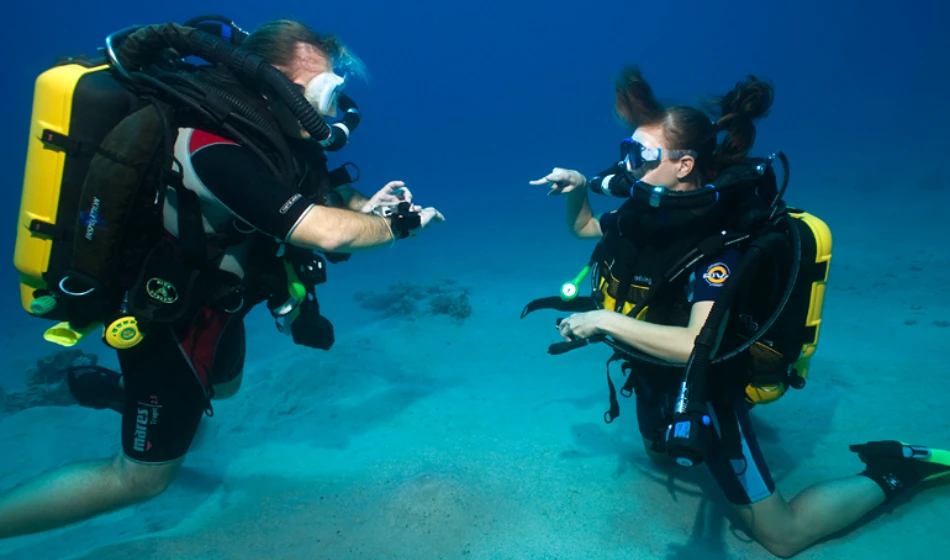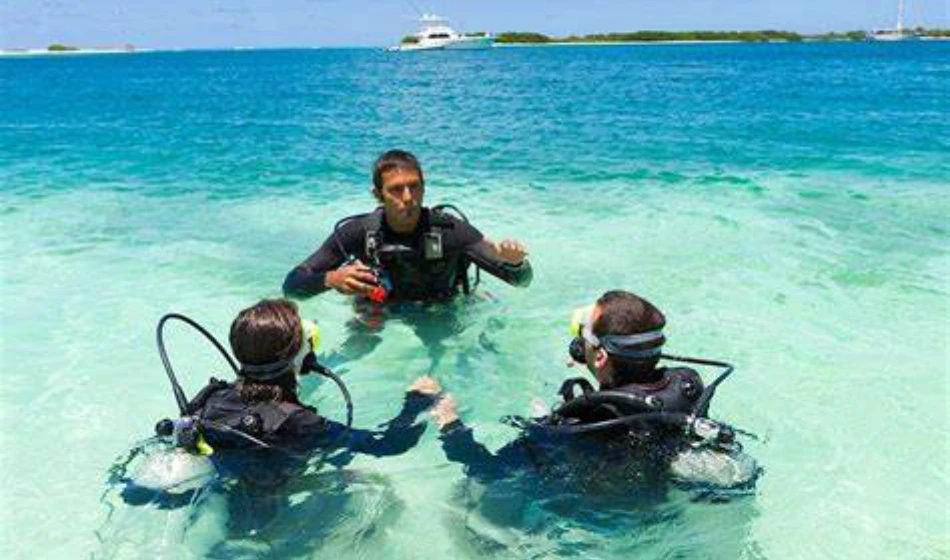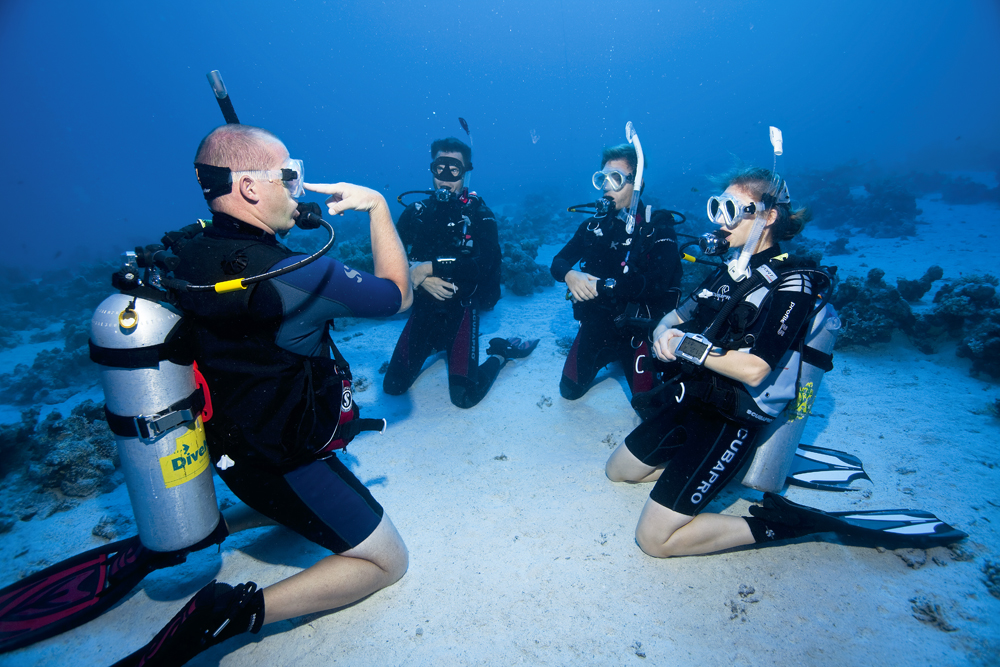Introduction
Diving into the deep blue sea is more than just an adventure; it’s a true test of human endurance, physiology, and mental strength. Scuba diving, while exhilarating, places significant physical demands on the body. Divers must adapt to changing pressure environments, manage breathing with compressed air, and stay calm in challenging situations. Recent research by Abdelazim (2024) highlights how tailored training programs can significantly enhance divers’ performance and overall health. This article delves into the specific physiological changes that occur with specialized training and how these programs contribute to safer, more effective, and enjoyable diving experiences.
Understanding the Physiological Demands of Scuba Diving
Scuba diving places unique stresses on the human body, requiring divers to adapt to an environment vastly different from what they’re used to on land. The physical demands can be broken down into key areas: cardiovascular fitness, lung capacity, and oxygen consumption.
Cardiovascular Fitness
Diving often involves swimming against currents, navigating varying depths, and managing buoyancy, all of which require substantial cardiovascular endurance. The cardiovascular system works harder to pump blood and oxygen to the muscles actively engaged during a dive. The added resistance of water and the need to maintain a steady pace while conserving energy further emphasize the importance of a well-conditioned cardiovascular system.
Lung Capacity and Breathing Efficiency
Breathing compressed air underwater presents its own challenges. As depth increases, the density of air increases, making it harder to breathe. This increased resistance can strain respiratory muscles and reduce oxygen exchange efficiency. Divers must maximize their lung capacity and improve breathing efficiency to ensure they have enough oxygen throughout the dive.
Oxygen Consumption
The body’s demand for oxygen rises during physical exertion, and this demand is even greater underwater. Divers must carefully manage their oxygen consumption, as their supply is limited to the amount of compressed air in their tanks. Efficient oxygen use is crucial not only for extending dive duration but also for reducing the risk of complications like decompression sickness.
These physiological demands highlight the importance of tailored training programs designed to prepare divers for the challenges they’ll face underwater. By enhancing cardiovascular fitness, lung capacity, and oxygen efficiency, divers can improve performance and reduce diving risks.
The Science Behind Tailored Training Programs

Tailored training programs are specifically designed to meet scuba divers’ unique needs, focusing on improving cardiovascular endurance, lung capacity, and muscular strength, all essential for safe and effective diving.
Developing a Tailored Training Program
The development of a tailored training program starts with assessing the diver’s current fitness level, diving experience, and specific goals. This initial evaluation allows for the creation of a personalized plan that addresses the diver’s strengths and weaknesses. For instance, a novice diver might need a program that builds foundational cardiovascular endurance, while a more experienced diver might focus on enhancing lung capacity and breathing control.
Key Components of a Training Program
- Aerobic Conditioning: Activities like swimming, running, or cycling are integral to improving cardiovascular endurance. These exercises strengthen the heart and lungs, allowing the body to deliver oxygen more efficiently during a dive.
- Resistance Training: Exercises like weightlifting or bodyweight exercises build muscular strength and endurance, which are crucial for managing the physical demands of diving, such as carrying equipment and swimming against currents.
- Breath-Hold Exercises: These exercises improve lung capacity and breathing control, helping divers manage their breathing more effectively, reduce oxygen consumption, and extend dive duration.
- Flexibility and Core Strength: Flexibility and core strength are also vital. A flexible body moves more efficiently underwater, reducing the effort required to swim and manage buoyancy. Core strength stabilizes the body, making it easier to maintain proper posture and control during a dive.
Monitoring Progress
As divers progress through their tailored training programs, it’s important to monitor performance and adjust as needed. Regular assessments allow trainers to evaluate the program’s effectiveness and ensure that the diver is on track to meet their goals.
Key Physiological Improvements
Tailored training programs lead to significant improvements in several physiological areas critical for scuba diving. Abdelazim’s (2024) research highlights these enhancements, showcasing the benefits of specialized training for divers.
Increased Lung Capacity
One of the most notable improvements from tailored training is increased lung capacity. Divers with greater lung capacity can take in more air with each breath, allowing for better oxygen exchange and more efficient use of their air supply. This also helps divers stay calm and composed, even in challenging conditions underwater.
Better Oxygen Efficiency
Tailored training programs improve the body’s ability to use oxygen more efficiently through aerobic conditioning and breath-hold exercises. As a result, divers can perform physical tasks with less effort and reduce overall oxygen consumption.
Improved Cardiovascular Health
Enhanced cardiovascular health is another key benefit. By strengthening the heart and improving circulation, divers can sustain physical activity for longer periods without fatigue, improving performance and reducing the risk of cardiovascular-related issues during a dive.
Enhanced Muscular Strength and Endurance
Increased muscular strength and endurance make it easier for divers to handle the physical demands of diving. Whether swimming against a strong current or carrying heavy equipment, strong muscles help divers perform these tasks with less strain and reduce the likelihood of injury.
Enhanced Performance and Safety Underwater
The physiological improvements gained from tailored training programs translate directly into enhanced performance and safety underwater. Divers who have undergone specialized training are better equipped to handle diving challenges, leading to more enjoyable and secure experiences.
Deeper Dives and Longer Durations
With improved lung capacity, oxygen efficiency, and cardiovascular endurance, divers can explore greater depths and stay underwater for longer periods. These enhancements allow divers to push their limits safely, opening up new possibilities for exploration and discovery.
Reduced Risk of Decompression Sickness
Decompression sickness, or “the bends,” is a serious risk for divers, especially when ascending too quickly from deep dives. By improving cardiovascular health and oxygen efficiency, tailored training programs help divers manage their ascent more effectively, reducing the risk of decompression sickness.
Enhanced Buoyancy Control
Buoyancy control is crucial for divers, allowing them to maintain their position in the water column without expending unnecessary energy. Tailored training programs improve the core strength and muscle control needed for precise buoyancy management, leading to smoother, more controlled dives.
Faster Recovery After Dives
Divers who undergo tailored training programs also experience faster recovery times after dives. Improved cardiovascular health and oxygen efficiency allow the body to clear nitrogen more effectively, reducing post-dive fatigue and the risk of decompression-related issues.
Case Studies and Success Stories
Real-world examples of divers who have benefited from tailored training programs highlight the significant improvements in diving performance and overall health.
Professional Diver
A professional diver, with over a decade of experience, struggled with managing oxygen consumption and frequently experienced fatigue during long dives. After enrolling in a tailored training program focused on cardiovascular endurance and lung capacity, he reported a 20% increase in dive duration and a significant reduction in post-dive fatigue within six months. His enhanced performance allowed him to take on more challenging dives and explore deeper sites with greater confidence.
Recreational Diver
A recreational diver, new to the sport, had difficulty controlling her buoyancy and often felt anxious during dives. Her tailored training program included breath-hold exercises, resistance training, and flexibility exercises to improve lung capacity, muscular strength, and overall composure. After completing the program, she noticed a marked improvement in her buoyancy control and felt more relaxed and in control during her dives, allowing her to fully enjoy her diving experiences.
Competitive Freediver
A competitive freediver sought to improve his breath-hold time and overall endurance. His tailored training program included advanced breath-hold exercises, high-intensity interval training (HIIT), and specific resistance exercises targeting the muscles used during diving. Over a year, he saw a remarkable 30% improvement in his breath-hold duration, enhancing his performance in competitions and contributing to greater control and safety during dives.
Dive Instructor

A seasoned dive instructor faced challenges with maintaining energy levels during multiple dives throughout the day. His tailored training program focused on enhancing cardiovascular endurance and muscular strength, particularly exercises that mimic the physical demands of leading dive groups. After three months of consistent training, the instructor reported significant improvement in stamina, allowing him to complete back-to-back dives with minimal fatigue. His improved endurance benefited his diving experience and enabled him to provide better guidance and safety for his students.
Technical Diver
A technical diver who regularly participated in deep, complex dives struggled with anxiety related to the physical demands of long decompression stops. His tailored training program incorporated mental conditioning, breath control, and core stability exercises. This holistic approach helped him develop a greater sense of calm and control during prolonged dives, reducing his anxiety and enhancing his overall diving experience.
How to Implement a Tailored Training Program
For divers interested in enhancing their performance and safety through tailored training programs, the process begins with careful planning and a commitment to consistent practice. Here’s how to start and maintain a successful training regimen.
- Consult with a Professional: Before beginning any tailored training program, consult with a fitness professional or diving coach experienced in designing programs for divers. These experts can assess your current fitness level, identify areas for improvement, and develop a customized plan that addresses your specific needs and goals. They can also help monitor your progress and adjust the program as necessary to ensure optimal results.
- Set Realistic Goals: Setting realistic, achievable goals is crucial for staying motivated and on track with your training. Your goals should be specific, measurable, and time-bound. For example, you might aim to increase your lung capacity by a certain percentage within six months or improve your breath-hold time by a specific number of seconds. Clear objectives help you stay focused and provide a benchmark for measuring your progress.
3. Incorporate Key Exercises
A well-rounded tailored training program should include a variety of exercises targeting different aspects of your fitness:
- Aerobic Conditioning: Engage in activities like swimming, running, or cycling at least three times a week to improve cardiovascular endurance.
- Resistance Training: Perform strength training exercises, such as weightlifting or bodyweight exercises, two to three times a week. Focus on exercises targeting major muscle groups used in diving, including the legs, core, and upper body.
- Breath-Hold Training: Practice breath-hold exercises regularly to increase your lung capacity and improve your ability to control your breathing underwater. Start with shorter breath-holds and gradually increase the duration as your comfort level improves.
- Flexibility and Core Work: Incorporate stretching and core stability exercises into your routine to enhance flexibility and improve control during dives. Yoga and Pilates are excellent options for divers, as they promote both flexibility and core strength.
4. Monitor Your Progress: Regularly monitoring your progress is essential for staying on track and making necessary adjustments to your training program. Keep a log of your workouts, noting any improvements in performance metrics such as lung capacity, breath-hold duration, and cardiovascular endurance. Periodic assessments with your fitness professional or diving coach can provide valuable feedback and help refine your training plan.
5. Adapt the Program as Needed: As you progress, it’s important to adapt your training program to continue challenging your body and prevent plateaus. This might involve increasing the intensity or duration of your workouts, incorporating new exercises, or adjusting your goals. Flexibility in your training approach will ensure that you continue to make gains and achieve your desired outcomes.
6. Prioritize Recovery: Recovery is a critical component of any training program, especially for activities as physically demanding as scuba diving. Ensure that you allow sufficient time for rest and recovery between workouts to prevent overtraining and reduce the risk of injury. Incorporate practices such as stretching, massage, and adequate sleep to support your body’s recovery process.
7. Stay Consistent
Consistency is key to achieving long-term success with a tailored training program. Make training a regular part of your routine, and commit to following your program even when progress feels slow or challenges arise. The cumulative effect of consistent training will lead to significant improvements in your diving performance and overall health over time.
Conclusion
Scuba diving demands both physical and mental resilience, and tailored training programs equip divers with the tools to enhance their performance, reduce risks, and fully enjoy the underwater world. As demonstrated by the research of Abdelazim (2024) and the success stories of divers who have embraced specialized training, the benefits of these programs are profound and far-reaching. By focusing on improving cardiovascular endurance, lung capacity, muscular strength, and mental fortitude, divers can unlock new levels of capability and safety in their underwater adventures.
Whether you’re a professional diver, a recreational enthusiast, or someone looking to push the limits of freediving, implementing a tailored training program can significantly enhance your diving experience. With the right guidance, commitment, and consistency, you can achieve remarkable improvements that will allow you to dive deeper, stay underwater longer, and explore the ocean with greater confidence and control.
Read more.
https://empyreanpassage.org/2024/08/23/unlock-2024s-hidden-deep-sea-rituals-maritime-legends/

